ECTS 2001 Diary
Article - EuroGamer is on site to provide coverage of Europe's biggest computer games trade show
ECTS, Europe's biggest computer games trade show, is back in London for another year. But our answer to E3 is a decidedly low-key affair by comparison to the annual American extravaganza, with a distinct absence of brash stands, dancing midgets, scantily clad women and noisy speaker systems in recent years. It's all getting a bit .. serious.
Note - for a full index of our ECTS coverage, check the last page
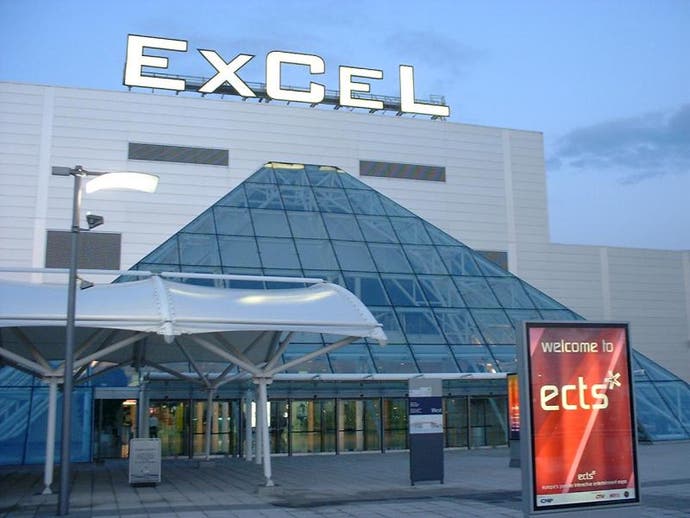
Hello! Is There Anybody Out There?
Sadly this year the lack of booth babes and adolescent fanboys isn't the only reason things are quiet though. Over the last few years most of the big name publishers have vanished, retreating into private meeting rooms one by one before departing entirely.
Electronic Arts, Activision, Infogrames, Sega and former booth kings Eidos are all amongst the regular absentees now, and this year they are joined by the likes of Nintendo, Sony, Microsoft, Virgin and Take 2. Meanwhile companies such as Capcom and Codemasters have disappeared into private hospitality suites targeted at retail buyers, ignoring the press entirely. Indeed, the only major publisher left at ECTS is UbiSoft. The focus this year is more on developers and smaller names, with a host of upcoming European companies expanding to fill the hole left by the big boys. The Germans are putting in a particularly strong showing this year, with both CDV and FishTank promising impressive line-ups including titles such as Aquanox, Etherlords, Neocron and Escape From Alcatraz.
Whether this is just a temporary blip thanks to the phantom "transition period" or a trend away from centralised trade shows in Europe remains to be seen, but the big names have certainly picked the wrong time to leave. This year sees ECTS move from the decaying Victorian splendour of Olympia in the heart of gridlocked Kensington to ExCeL, a purpose-built 21st century venue in the Docklands area of the East End. Out go cast iron pillars and a giant glass roof that traps the heat and turns the entire hall into a sweltering sweat pit, in come air conditioning and networking facilities, with a selection of bars, hotels and restaurants inside the main building itself. We've yet to see the interior of the main exhibition hall, but we're definitely impressed with the parts we have explored so far.

Shaggy Dog Story
With the ascendancy of independent developers and smaller publishers at ECTS this year, it's perhaps natural that the main show is preceded by the very first European Game Developers Conference this weekend. Things kicked off this morning with a range of topics on offer, from the future of graphics technology and an exploration of the Xbox's audio systems to the rather pretentious sounding "Dogma 2001 : a sermon on technology, creativity and art". Yes, we gave that one a miss.
Instead I started the day at a talk on "Technology Five Years From Now" given by David Braben, the legendary BritSoft developer behind the Elite series. Straying somewhat from the subject, he covered everything from creativity and excessive violence in games to animation and raytracing, and how the latest graphics technology is locking us into using texture-mapped polygons. The topic of speech recognition and synthesizing was also covered, with the suggestion that one day conversations with in-game characters could be carried out entirely naturally rather than using the clunky menu-driven systems most role-playing and adventure games use today.
Neatly sidestepping this issue, David's company Frontier Development is currently working on A Dog's Tale, featuring the exploits of a lost dog trying to find his way home. No dialogue problems there then. Instead animation is the focus, as moonwalking characters who pivot on the spot without moving their feet seem to be something of a pet hate for David (if you'll excuse the pun). The result of all this work on animation technology certainly looked promising in the demo version, with the dog not putting a paw wrong as six different animation sets were mixed and transitioned in real-time to ensure smooth and believable motion, whatever bizarre commands the player gave. The title is really aimed more at a wider market though, and it's not obvious how appealing it's going to be to hardcore gamers. I'm suffering Littlest Hobo flashbacks already...
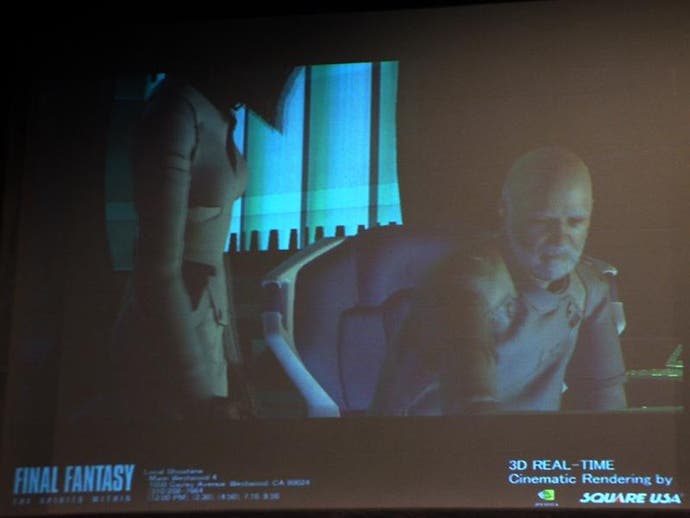
Fantasy Becomes Reality
Next up was Tommy Strand of Funcom, talking about designing an online world - "what we've learnt not to do again" in the wake of Anarchy Online, basically. It was an interesting look at the development and beta testing of the game and the troubles that came from creating the company's first massively multiplayer title, ranging from dealing with cheats and exploits ("the client can never be trusted - it's in the hands of the enemy") to the game database collapsing in the early stages of beta testing, resulting in an expensive consultant being drafted in to move the whole system across to a more scaleable Oracle database.
After that Brian Schmidt arrived to give a presentation on the Xbox's audio system and the highly optimised implementations of DirectSound and DirectMusic supported by NVIDIA's audio processor. DirectSound in particular has been completely rewritten from the ground up for the console, proving once again that this is not simply a bunch of PC parts cobbled together and placed in a funky black and green case. The possibilities of the dynamic music and audio scripting systems included in DirectX 8 are virtually endless, and with the addition of full Dolby Digital 5.1 surround sound support gamers should be in for an aural treat once developers start to take full advantage of the system's capabilities.
Sticking with NVIDIA hardware, David Kirk took a peek into the crystal ball to give a rather vague glimpse at the future of 3D graphics. After feedback from developers, it seems that their approach from now on will be to make each new card more and more programmable, building on the flexible pixel and vertex shaders included in the GeForce 3 to allow developers increasing control over the rendering pipeline rather than imposing a limited selection of preset operations. Already the GeForce 3 allows developers to implement everything from fish-eye distortion to the kind of motion blur and depth of vision effects touted by 3dfx shortly before their demise. And to demonstrate the sheer power of the latest hardware, David took an off-the-shelf GeForce 3 and proceeded to demonstrate Final Fantasy : The Spirits Within being rendered in real-time. It was a bit of a cheat, because the textures weren't quite as rich and the backdrops had been grossly simplified, but seeing several thousand polygons worth of Dr Aki Ross being shifted in real-time was certainly an eye-opener. With full-scene anti-aliasing the frame rate came in at a mere 12-15 fps, but it "should be running at 24 fps in a couple of weeks". A hint that NVIDIA is about to announce a GeForce 3 Ultra?

Toasty Buns And Mobile Phones
Next up was Funcom's Ragnar Tornquist, with an entertaining and at times surreal talk on storytelling in computer games ("they've all been eaten by dingoes!"). As the brains behind The Longest Journey, arguably the best point-and-click adventure game of recent years, Ragnar certainly knows all about storytelling, even if that was somewhat lost in the off-the-wall presentation style at times.
Finally came the day's keynote speaker, a distinctly un-European Masaya Matsuura, the warped mind responsible for Parappa The Rapper. His speech about cultural barriers and the difference between Japanese and Western games had its moments, but tended to get bogged down in irrelevant talk about attitudes towards mobile phones, walkman-users on the New York subway, and how safe you are on the streets of London. It didn't help that Matsuura's English is a bit poor, and he chose to deliver the entire lecture in Japanese, pausing every couple of minutes for the assistant sitting next to him to read the English version of what he had just said from a prompt sheet. Ironically towards the end of the speech he talked about the importance of subtitles, something which would have been helpful here...
All was forgiven though once Parappa The Rapper 2 appeared on the big screen. Just released in Japan, the game should be arriving in the west sometime next year. As you would expect the sequel is completely insane, and the sequence we were shown (titled "Toasty Buns" no less) featured a god-like figure showing Parappa how to make burgers while helpfully rapping the instructions to a ridiculously catchy tune. I'm not quite sure how he managed to turn "now shred the lettuce" into a cool song lyric, but the result had the audience in stitches and Parappa 2 looks like being a lot of fun. Even more amusing though was the music video for the game's title track (performed by De La Soul) which sees the group dressed up as chefs and waving burgers around, and even being transported into the game as cardboard cut-out style characters in some shots. The mind boggles.
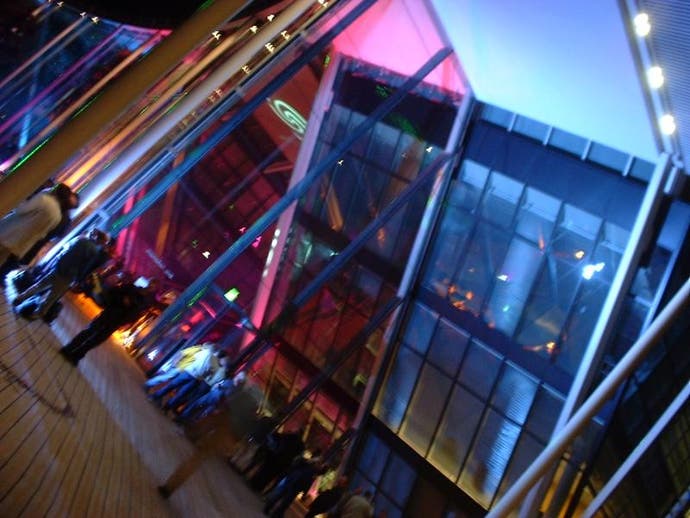
It's All Over
Overall then it was something of a mixed day, but with six speeches taking place simultaneously most of the time, there was enough going on to keep developers and press alike busy. Look for more detailed write-ups of some of the more interesting lectures in coming weeks.
In the meantime, tomorrow will see the Nintendo Show introducing Europe to the GameCube, Peter Molyneux will be talking about the appropriately titled Project Ego at GDC Europe, and the evening ends in style with the annual Electronic Arts bash at their headquarters in Surrey. And that's just day two of the five day ordeal that ECTS has morphed into. Will our livers endure the punishment? Come back tomorrow to find out. But please, speak softly...
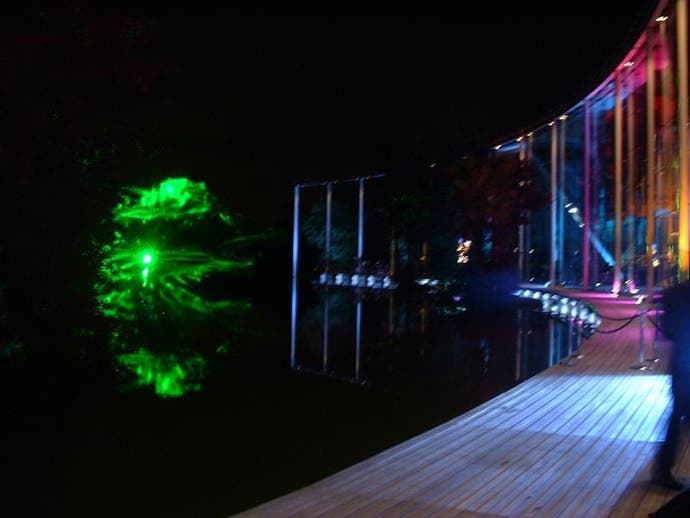
All Work And No Play
Saturday began with the Nintendo Show at the Westminster Central Hall, right opposite Westminster Abbey. It was a glitzy presentation, complete with a gospel choir singing "Your Love Keeps Taking Me Higher" as a giant Nintendo logo was hoisted into the air above the stage.
But although Nintendo still haven't announced when their GameCube will be released in Europe beyond a vague "Spring 2002", it wasn't a case of style over substance, with some new announcements and gameplay footage to applaud. The games on show were also impressive, and Pikmin and Rogue Leader particularly caught my attention in the gameplay area. Look for full previews of both games in coming weeks, and if you want a more detailed look at the show, read Tom's report.
With the Nintendo Show winding up for the evening at 6pm, it was time to hop on to a coach and be bussed out to the luxurious EA Europe offices in deepest darkest Surrey for their EA Play event. As in previous years games were scattered around the ground floor of the complex, with the cafeteria providing free nosh ranging from roast beef sandwiches and sausages to stir fry and kebabs. Copious amounts of alcohol were also available, and with big screens showing the England football team giving Germany a surprise 5 : 1 drumming in the early hours of the event there was much rejoicing. Some people were already the worse for wear by 10pm, including a certain PR rep who was struggling to remember the sales spiel he was supposed to be giving me as he demonstrated his company's latest game. We won't name names - I'm sure he's suffering enough from his hangover...

Capped
The games themselves were a mixed bunch, taking in everything from the latest EA Sports titles (yawn) to Medal of Honour : Allied Assault and Command & Conquer : Renegade. Even Harry Potter put in an appearance, with the PC version of the game discovered to be running on the Unreal Tournament engine and looking surprisingly good. Not knowing anything about Harry Potter though, I soon moved on to give the James Bond first person shooter Agent Under A Fire a go, only to be foiled by the fiddly console controls. I'm just too used to the mouse and keyboard combination on the PC to get my head round the dual shock system used in PlayStation shooters.
I had more luck in the Capcom room though, with Devil May Cry and Maximo : Ghosts To Glory both showing on the PS2. Maximo turned out to be a lot of fun, and despite its almost cartoonish look it was also rather challenging. The action obviously centered around misty graveyards full of tombs, dead trees and undead skeletons, and the obligatory quota of lava was also in evidence. It's hardly groundbreaking stuff, but it looks good and plays well, with a mixture of platform and third person action elements.
Devil May Cry scored higher on novelty factor though, with the player being rewarded for spectacular kills and the focus very much on madcap action. Infinite ammunition and a combination of swords and guns makes for a frantic experience, and a typical fight may see you knocking back an enemy with your shotgun, hurling him into the air with a swift blow of the sword, and then switching back to your gun to hold the wounded foe suspended in mid-air with a stream of lead. It's all very cinematic and pumps fresh blood into the stale horror action genre. Look for a full preview later in the year.
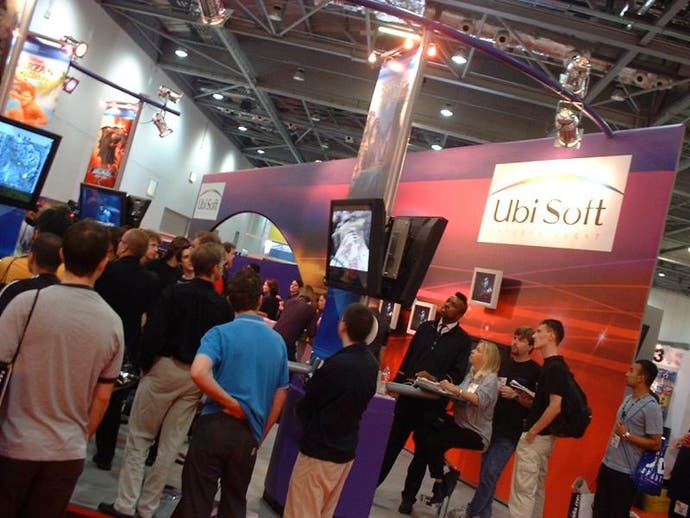
Home Again, Home Again
And that was it. As midnight approached I headed off back to the hotel to get ready for the first day of ECTS proper. I had cunningly organised my appointments so that I had Sunday morning free to recover from the EA Play party, but with Blizzard's big press conference due to kick off at mid-day and appointments with FishTank and UbiSoft on the cards for the afternoon, it was time for bed...

Most Excel-ent!
As we pointed out earlier on in our diary, ECTS has moved to a new venue this year - Excel, a purpose-built exhibition and conference center in the Docklands area of east London. This marks a huge step forwards from the antique Olympia, with a far more open feel to things as well as better internet access and .. air conditioning!
Even the press office is a big improvement on last year, with a mixture of tables, chairs and really comfy sofas big enough to swallow even the most rotund of gaming journalists whole. And this was our first stop of the day, as Blizzard gave a press conference to announce their new massively multiplayer role-playing game - World of Warcraft. The early footage we saw was rather impressive, and although it does look like "just another MMRPG" in an increasingly crowded market, Blizzard do have a few tricks up their sleeves which may make it stand out from the crowd.
We have a one-on-one meeting with them on Monday, so we should soon have a better idea of exactly what they are planning. But as the game has only been in development for a year so far, we can guarantee that it won't be out any time soon. MMRPGs take three or four years to develop at the best of times, and Blizzard are notorious for their long development cycles anyway. We would expect to see the game emerging into beta some time in 2003 at the earliest, and Blizzard wouldn't be drawn on any official release date, preferring to keep their options open. Probably a wise move.
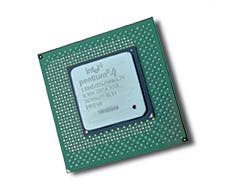
So Much To See, So Little Time
With that excitement out of the way, our afternoon schedule took in UbiSoft, FishTank, Novalogic and Microids, all of whom had a great line-up of games. At UbiSoft I became so engrossed in Red Storm's Ghost Recon that I didn't get to see any other PC games during my one hour meeting. The game is looking impressive in terms of both graphics and gameplay, putting you in control of a group of elite special forces types working behind enemy lines. It's a bit like Rainbow 6 in the great outdoors really, which is no bad thing, and the lengthy planning stage of previous Red Storm games has been replaced by a more flexible in-game command system that lets you direct the other squads on the fly.
Meanwhile Novalogic were showing off the helicopter gunship sim Comanche 4, which also sported some impressive visuals. It's very much aimed at action fans rather than hard core simmers, although it does include an adjustable flight model to vary the level of realism according to your tastes. The controls were very simple even using a keyboard and mouse combination, and thanks to plenty of ground traffic and foot soldiers you got a good feeling of being in a real conflict.
FishTank were showing off an early build of the horror title Call of Cthulhu, which was looking very impressive, although sadly there was only one level fully playable and little in the way of action in sight. The insanity feature (which sees your character slowly going mad as he catches glimpses of things-which-should-not-be and mutilated corpses) wasn't implemented yet either, although in the final version you should get some neat visual and audio hallucinations and distortion as your avatar goes round the bend. Other games on show included Archangel (a third person action-RPG set across three time periods), Aquanox (which looks even better in action than it does in the screenshots) and SWINE, a bizarre real-time strategy game based around a war between rabbits and pigs. It might sound dumb, but it actually looked very promising.
Finally we made our way over to Microids, where Warrior Kings has found its new home after being unceremoniously dropped by Sierra earlier in the year. Sierra must be kicking themselves now, because this real-time medieval strategy game was looking truly stunning and is arguably the best game we've seen so far. It's a bit like Cossacks, but in glorious spinny-rotatey™ 3D and with a small selection of fantasy units in the later stages of the game. The focus is very much on tactics rather than unit production and rushing the enemy, with formations and terrain both playing a big role. Expect to hear a lot more about this one as it approaches release towards the end of this year.
So many great games, and that was just the first day of ECTS! Tomorrow's highlights include a one-on-one session with Blizzard to talk about the new Warcraft games, an audience with NVIDIA, and a peek at some of the games Koch will be handling in the UK through their new Virtuoso group. Will my feet fall off before we get that far? Find out tomorrow!
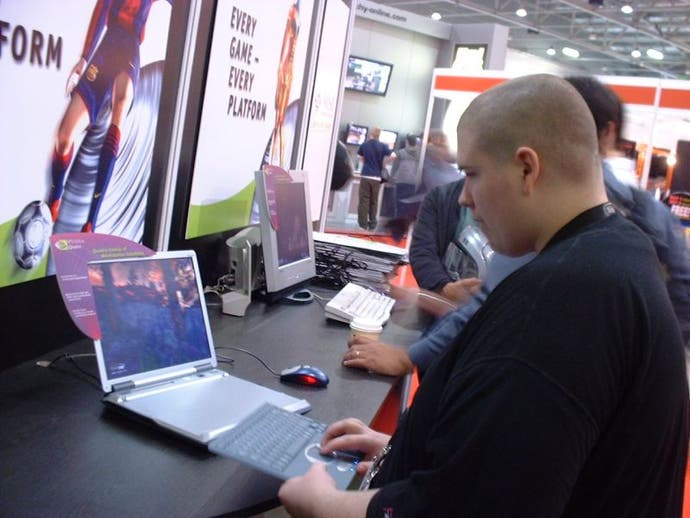
Falling Down
Monday promised some big surprises, with a Vivendi press announcement in the luxurious Four Seasons Hotel on Canary Wharf to look forward to, and meetings with most of the big names in hardware at the show crammed in to my afternoon schedule. This late start had nothing to do with the activities of the night before at the Babel Media party. Honest. There was much excitement in my carriage on the way to Canary Wharf as the possibilities were tossed about. Half-Life 2, we all thought. Counter-Strike : Condition Zero, perhaps even Team Fortress 2! Alas, we were getting ahead of ourselves. The announcement from Vivendi had indicated that one first person shooter would be on show, and several next generation console games. As it happened, the three titles announced during the crowded presentation were all console games, and none of them was what we had hoped for. That said, they certainly did have a lot going for them. First up was Dinoz, a French-made PlayStation 2 game which "anticipated the widening demographics" of the console. It will be a game for younger players, the speaker enthused, featuring plenty of cute little dinosaurs split into four families; two legz, crawlies, four legz and birdies. Peculiarly, Dinoz is a team-based pseudo sports game, which developer Oiko have been working on for nearly a year in their Paris development studio. Oiko are a subsidiary of MASA, and it is through collaboration with MASA that a lot of their technology was developed. Dinoz is based on the DirectIA game engine, which is a motivation based decision engine, as opposed to the classic decision tree. Apparently. Which all sounds pretty complex for a kiddie title. Wacky team sport action is the name of the game though, and when we saw footage of the title in action this much was evident. The idea is to play with and train prehistoric creatures from the four families. You have four Dinoz under your control during games of Dinozball, which take place in any of 30 stadia (well, deserts, ice packs, volcanoes, islands etc), and the object is to score points by controlling what appears to be a dinosaur egg, very much like football. The footage was difficult to keep up with though due to some intermittent software crashes on the demonstration machine, but on the whole it was all very cutesy, well animated and accompanied by some energetic music.
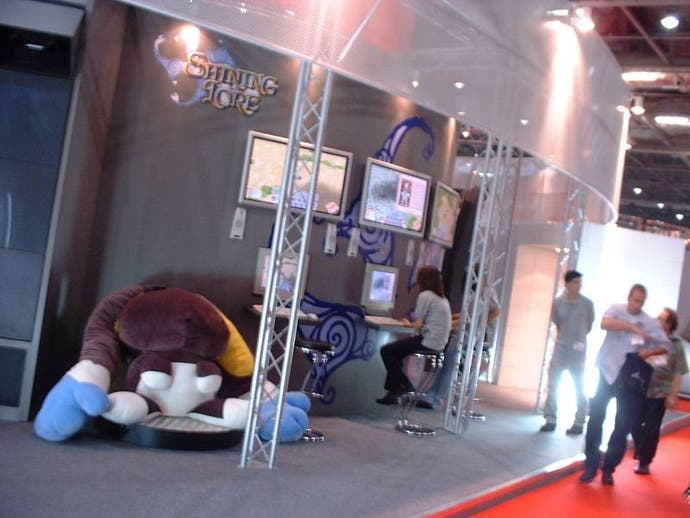
Come to the city, have a few laughs
Once the giggling had died down, Foo Katan, CEO of Bits Studios took the stand and introduced his company's debut GameCube title, Die Hard. Set after the trilogy of films but curiously unconnected with either the Die Hard Trilogy or Nakatomi Plaza PC games, it's a first person shooter tour de force, developed by a British studio with more than 14 years of development experience. The company is one of Nintendo's favourite second parties, according to Katan, although they work multi-platform as well. Die Hard is based on their proprietary multi-platform console game engine, TWED, which can be used in first and third person games. Bits' Die Hard is set after the conclusion of Die Hard With A Vengeance. John McClane has headed back to Los Angeles to be with his estranged wife, only to discover to his surprise that his daughter Lucy has grown up and joined the Police force. Domestic arguments are the least of his worries though; Peter Gruber, son of Alan Rickman's character from the original film has arrived in LA with a mind to avenge his father. This means trouble for John, who finds himself in a whole heap of trouble. Bits' TWED engine translates the story in a cinematic fashion onto the small screen using Dynamic Cinema Cam (DCC), a feature used to emphasize the movie-like gameplay. Die Hard also boasts full facial animation with perfect multi-language lip sync, and Bits are angling the game as a modern replacement to Goldeneye in the console first person shooter genre. The footage we saw was graphic, very intense and punctuated by some of McClane's most profane tributes to terrorism. Yippee kay ay, mother ffff…

Ice Scream
Next up on the Vivendi agenda was The Thing on PlayStation 2. Jim Wilson, President of Universal Interactive was the man pulling the show strings. "It's nice not to be presenting Crash Bandicoot or Spyro the Dragon for once," he offered. Along with William Latham of Computer Artworks, he introduced the first showing of game footage in Europe. "A huge license, and an extraordinary film." The cinematic look and feel is the most obvious thing about The Thing on PS2. The spirit of the film is embodied within the game, as the technology is pushed to its limits by multiple light sources illuminating the peculiar shapes and forms of the film. "What the hell happened here?" a voiceover inquires, as a salvage squad touches down outside the site where The Thing propagated. Lying dead in the snow is MacReady. The idea behind the game is to try and control the fear and marshal the trust of your squadmates as you investigate the aftermath of the film. If your pals get too scared, they may turn on you. If their trust in you wanes, you may find yourself with a bullet in the head. It's very much a squad-based game, and the trust and fear mechanisms are the most important aspect of it. It's extremely important that you control the emotions of your NPC companions while you fight off the machinations of the alien lifeform. Visually, with a year to go The Thing looked reasonable, but we could see areas where it obviously needed work. The aliens still looked like models with square edges and the models seem to glide slightly along the ground as they walk. Apart from that the game looks pretty nice - it certainly has a lot of potential if Computer Artworks can wrap their ambitious design around an exciting, cohesive storyline. Look forward to The Thing next year, to coincide with the 20th anniversary of the film.
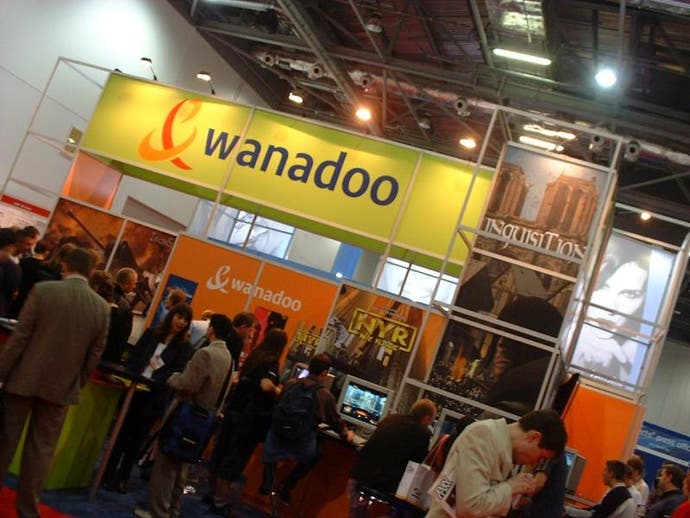
Drop 'em
The processor price war was the next battlefield we encountered. Intel had a decidedly smaller presence than ECTS 2000, but then last year marked the launch of the Pentium 4. Ironically, they might have been better off putting on a big show this year. AMD were nowhere to be seen, off parading around behind closed doors, and Intel had a lot to say. Processor speeds are still doubling once every 18 months, and the 2GHz Pentium 4 really flew. Thanks to higher overall yields of processors, partially because Intel's factories now use a larger wafer and the new 0.13 micron fabrication processor, prices are still dropping. Although this puts them neatly in line with AMD, almost clock for clock according to PriceWatch, they maintain that this has more to do with improved yields and the decision to push P4 as the main Intel processor. This is the 'real' launch of the Pentium 4, and in its new form factor using new fabrication techniques it will continue to scale spectacularly. Northwood, the next iteration, has already been demonstrated at 3.5GHz. Pentium III is all but finished. Rumours sprang up last week that the 0.13 micron Tualatin would become the new Celeron rather than the new desktop PIII, and although neither of the Intel representatives we spoke to would confirm it, it seems like a logical move. The subject of Rambus isn't quite as touchy as we had thought it might be. Everyone was enthusiastic about it, pointing out how cheap it has become. Although Intel has been experimenting with i845, a Pentium 4 platform for SDRAM and DDR RAM, in performance terms neither is very far from the other, and it is the view of executives at Intel (and benchmarks on the web) that Rambus is still the way to go. In terms of enterprise (and to an extent the development of computer and video games), symmetrical multiprocessing (SMP) is something a lot of people would like to see in P4. Intel don't believe that it's really necessary at this stage though. The P4 already threads magnificently, they say, and introducing a new platform would compete with Prescott/Jackson, due to launch in late 2003, which multithread SMP-style individually. We had expected Intel to launch the 2GHz Pentium 4 then perhaps back off for a while, launching 2.1 and 2.2 in time for Christmas. Not so, it would seem. There's nothing to hold them back now, and with the lowest processors in the chain (1.3, 1.4 and 1.5GHz) all retailing at the same price, there seems to be no end to the upscale.

Guillotine
Before we spoke to NVIDIA, we wanted to ask Guillemot/Hercules about their relationship with the graphics card giant. In the past both have flatly denied that there is friction between the two over the 3D Prophet 4500 Kyro II board, and Jackie Seear, the firm's UK Marketing Manager, told us that the problems with GeForce 3 chip allocation were marketwide, not down to some childish feud. According to Jackie, the AO3 revision of the GeForce 3 chipset was buggy, and this meant waiting for the AO5 to arrive in bulk. At the moment supplies are still low, and every company that offers GeForce 3 is suffering. Beyond the GeForce 3 though, Guillemot still had plenty on show. Their range of graphics cards has grown to cover every sector of the market, with two Kyro II boards; the 64Mb version now joined by a 32Mb version, and two boards based on the original Kyro, one of which is a PCI card. Speaking of Kyros, ST Microelectronics' tiny little back-room stand was being used almost exclusively to showcase the Kyro II rendering 60,000 polygons at 60 frames per second. A demonstration to end the speculation that the card can't hack it, we were told. The show also showcased the release of the company's SDK, and a few factsheets about PowerVR MBX, which will slot into 3G mobiles whenever they lift off. Apparently the chip has run Quake III before board members at 30 frames per second. Impressive tech. Back to Guillemot/Hercules though, and making sure they can always supply the people that come to them is the company's number one concern. Be it graphics boards, sound cards, speakers, gaming peripherals and now even TFT panels; it's the most important thing. ATI, who had one of the larger stands at the show, hinted that they intend to offer their new Radeon chips, the 7500 and 8500, to companies like Hercules, ELSA and the like in NVIDIA fashion. The message seems to be that Guillemot/Hercules would be interested, but they'd need a reason to take them. A gap to fill. That's how the company works. In terms of gaming peripherals, some very swanky PlayStation 2 controllers called UPads were on show, as were the undermarketed replica firearm lightguns. Based on real life weapons like the Baretta, Desert Eagle and Uzi, the firm isn't anxious to give off the wrong impression. It's difficult to be responsible about a subject as touchy as firearms, particularly in the current social and political climate. As such, the guns will be carried by Electronics Boutique at least, but not given a heavy marketing push. Elsewhere on the stand Thrustmaster were showing off their F1 exclusive steering wheels and driving setups, and their motion-sensing beat 'em up equipment, which responds to your movements with on screen moves. Send a kick out to your right for instance, and your on-screen player sticks his foot in your opponent's face. And so on.
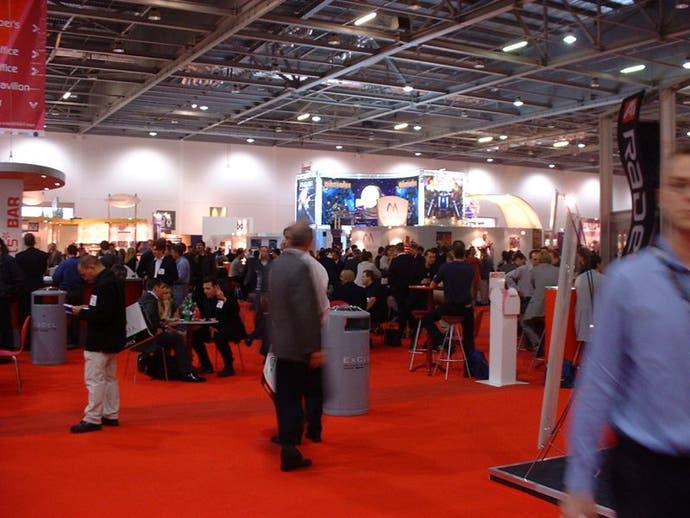
Collecting our things
After chatting to Guillemot, Intel, ST, ATI and more, I was quite weary. The walk to and from Vivendi's hotel hadn't helped, and I hadn't had a bite to eat since the previous evening. Thankfully, ELSA's first ECTS stand energized me once again with its many wonders. For starters, the company had the new black PCB GeForce 3s. Now, these cards aren't merely special because of the PCB, but also because the company will be advertising them as overclockable. This is an interesting idea, and we're not sure how they will get round the warranty implications, but Adam Foat, Product Manager for ELSA UK told me that he had seen chips scale to 240MHz core and 560MHz memory. Impressive figures. Aside from the GeForce 3, which we are already familiar with, ELSA had several interesting technologies on display. Firstly, their entry level TFT displays. These 15" models will be priced around £450, and they look stunning. There's very little visual tearing, unlike virtually every TFT display we've ever seen, and even from the most acute angle, every detail is still perfectly visible. On the more expensive side of things, they had 4D displays. You stand still while two cameras train in on your eyes and generate an appropriate image. This then proceeds to jump out of the screen at you, and that is exactly how it appears. An optical illusion, but a very impressive and I dare say useful one when it comes to 3D design. ELSA also plan to launch stylish monitors in shades of metallic grey at 19" and 21". Topping off an impressive display was the company's application of Bluetooth technology. Now, so far Bluetooth has singularly failed to impress me. Serial data transfer speeds dwarfed by the abilities of the 802.11b wireless networking standard and little else. On the ELSA stand, they demonstrated the interaction between mobile phone and car. As you get into the car, your mobile slung in the back with your gym kit (just imagine), you receive a phone call. Damn, can't reach. Your in-car stereo turns the music down, informs you of the call and allows you to pick it up, hands-free using wireless transmitters. Adam explained that beyond that people could one day do away with home and mobile phone numbers, just having calls picked up by equipment in whatever location you decide to head.
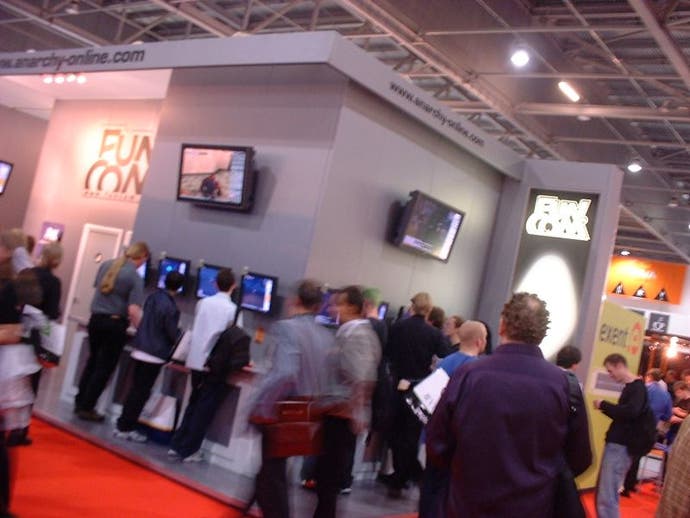
Show me the way…
Our last port of call for the longest day of the show was NVIDIA. After an impressive display of Fujitsu-Siemens laptops with removable keyboards and high-end NVIDIA graphics processors, we were led behind closed doors to see nFORCE in action. The integrated motherboard was running with a 1.2GHz Athlon onboard. Benchmark figures were in excess of equivalent GeForce 2 MX systems, something Andrew Humber, the company's European PR Manager put down to the integration of graphics chipset onboard and the knock-on effect of more memory bandwidth. The onboard sound, using Dolby Digital 5.1 was also impressive, and the demonstration we had was mildly psychedelic, with guns firing and cows mooing. Explain? No, he couldn't! The nFORCE motherboards are fairly close to Xbox technology, using the same MCP (Media Communications Processor) and a downgraded graphics chip. Xbox of course uses NV2A or thereabouts, the next iteration of GeForce 3. Anyway, with all said and lots done, it was time for the long (very long) journey home. Join us again tomorrow when John tackles whoever is left standing in the enormous ExCeL centre.
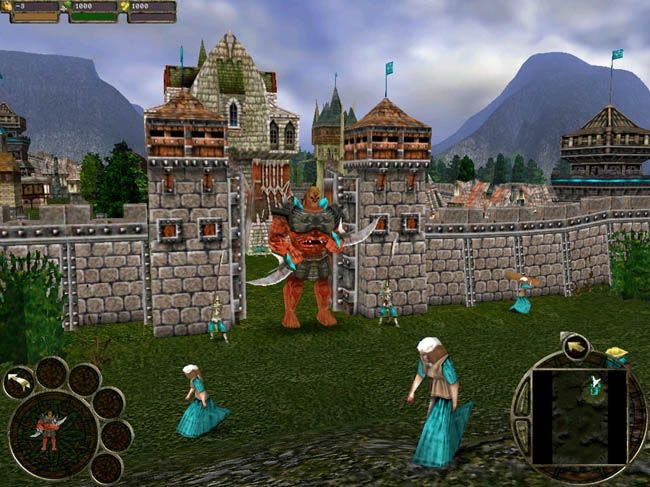
Happy Mondays
While Tom dealt with the hardware side of things, my Monday kicked off with a trip to Phantagram's stand. It's no great secret that we weren't the biggest fans of the Korean company's first European release, Kingdom Under Fire, but their new line-up includes three promising titles. First up was Shining Lore, a bizarre looking anime-styled massively multiplayer role-playing game. Phantagram told us that they "wanted to create something different", and they may just have succeeded - the game replaces the dull repetitive combat of a western MMRPG with the bright colours and spectacular effects of a console RPG, and also includes a host of Final Fantasy style mini-games and a dedicated in-game chat system complete with facial expressions.
Also looking good were the recently announced Duality and Strident, although sadly only pre-rendered footage of these games was on show at this early stage in development. Developed by a team formed by veterans of the Commandos series, Duality is an action role-playing game set in a cyberpunk world with both real and virtual worlds to explore. Strident on the other hand is an out-and-out action title in the vein of Devil May Cry and Oni, with a mixture of beat 'em up style special moves and gun-based combat on the cards.
Following up on a tip from CTW news editor Rob Fahey, our next visit was to Singularity Software, an unknown publisher showing off a surprisingly good multiplayer-focused tactical combat game called Team Factor. Developed in Eastern Europe, the game seems to land somewhere between Counter-Strike and Ghost Recon, with three teams battling it out with realistic weapons in both indoors and outdoors settings. Expect to hear much more about this game as it gets closer to release.

Here Comes The War
After a short lunch break to grab a cup of tea and a Danish in the press lounge, it was off to Blizzard for an up-close look at their latest titles. Work finally seems to be coming together on Warcraft III, with the latest version looking far more complete and in-depth than the build we saw at a press event in London back in March.
We were a little sceptical about the apparent change in focus from role-playing features to old fashioned real-time strategy, but the game still looks different enough to carve itself a niche. Heroes still play a major role in the game and can be developed from one mission to another with new skills and spells to learn as they rise in level. There are also seems to be plenty of attention to detail already, and balancing is well underway on the host of units and four different races included in the game. It's hardly revolutionary, but it does look like it could be a lot of fun.
The same could be said for World of Warcraft, which is Blizzard's leap on to the massively multiplayer bandwagon. Three systems were linked together in the Blizzard hospitality suite, with members of the development team putting the game through its paces and showing off different features and locations. It's still a good two years from release probably, but faster-paced combat and slightly cartoonish graphics should help it stand out from the impending crowd. Having the Blizzard logo on the box probably won't hurt it either, and the company must be hoping they will pick up both Warcraft and Diablo fans when the game finally launches.
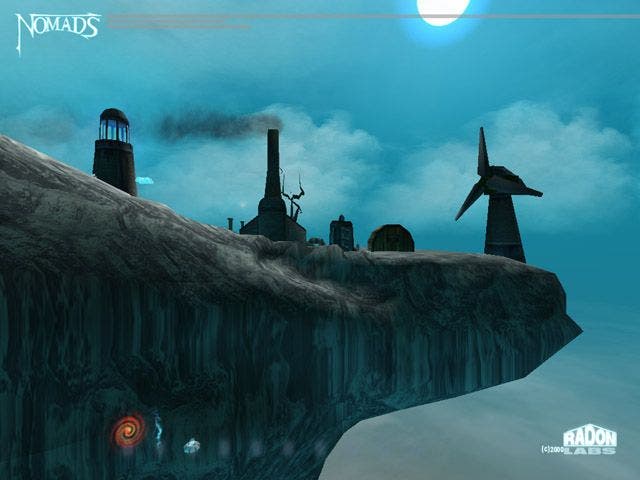
Multi-Pass
After getting our fill of Warcraft, it was a quick dash to the other end of the exhibition hall to meet with Koch Media, who are distributing games in the UK for a number of foreign publishers and developers through their Virtuoso label. Our first stop was France's Wanadoo, which had an impressive line-up on show. Despite its unfortunate choice of title, Iron Storm was one of the most pleasant surpises of the show, a first person shooter set in an alternative history where the First World War dragged on for fifty years, leaving much of Europe in ruins. It's all very atmospheric, and we're looking forward to getting our hands on preview code for the game in the next few weeks.
Also up at Wanadoo was NY Race, a flying car racing game based on the Fifth Element. It's all a little Wipeout, but with the added bonus of being able to duck and dive through the traffic lanes in three dimensions. Very fast paced, and a lot of fun. PC owners can also look forward to an eight player online race mode, which could be a blast if Wanadoo can get the net code right out-of-the-box. Meanwhile over at Arxel Tribe we got a closer look at the novel looking Hitchcock-inspired game The Final Cut. Featuring short clips from six of the master director's movies and an unusual plot involving a missing film crew and a psychic detective, it could prove to be a worthy follow-up to the last Arxel game we got our hands on, the excellent point-and-click Myst-style adventure game Faust.
After securing an invite to Monday night's Anarchy Online party, I joined Tom for a look at NVIDIA's impressive nForce before heading on to Rage for a look at their PC and Xbox titles. This was to be my only hands-on experience with the Xbox at the show, as Microsoft hadn't bothered to show up and few other third party developers had anything to demonstrate. Both Crash (an anarchic Destruction Derby style game) and Gunmetal (Transformers-style giant robot action) were looking great, and should be finished in time for the Xbox's European launch, rumoured to be in March 2002. We'll be bringing you full previews of many of these titles over the next few weeks...
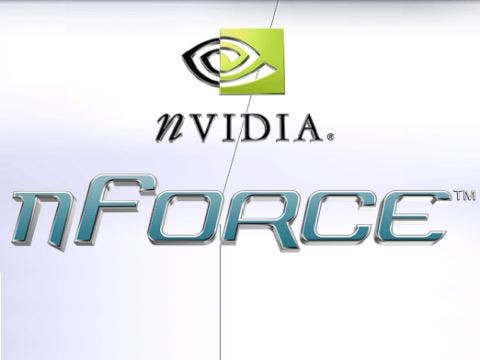
Baboons To The Left Of Me, Baboons To The Right Of Me
Tickets to the Sony party were apparently rarer than gold dust, although that didn't stop our boss from getting into the show and then spending the next day recovering from a monumental hangover and whinging about the music from 1980s cheese-masters Erasure. The alternative was a trip down to The Playing Fields for the Anarchy Online party, which turned out to be a smart move in hindsight.
Along with free booze, pizza and sausage rolls, we also got plenty of hands-on time with the game itself, which is due to launch across Europe at the end of this month. It's certainly come on leaps and bounds since we took part in the rather shaky beta test earlier in the summer, and a good time was had by all. I also ran into legendary Doom mapper Sverre Kvernmo, formerly of Third Law Interactive. He's now back in Scandinavia working on Funcom's new MMRPG Midgard and, after catching up on what he's been doing since I last met him in Dallas some eighteen months ago, he generously offered to help organise a back-room showing of the game for me on Tuesday afternoon.
Going back to Anarchy Online, arguably the highlight of the evening's gaming was when several players, developers and PR bods descended on the infamous Baboon's Nightclub in the entertainment district of Omni-Tek 1. Here a range of suspicious characters could be seen chatting and cavorting on the dance floor thanks to the game's wide range of social animations, while a pair of identical looking black guys in giant afro wigs and sparkling white suits did synchronized disco dancing. There was even a back room with table dancers squirming around while appreciative players sat on sofas watching, and the whole club was buzzing with activity late into the night. Bizarre, but highly amusing.
At this point we actually got our hands on a pair of tickets to the Sony party from the ever-generous Mark Allen of Koch Media. Unfortunately by this point it was so late that we couldn't have got to the venue (out in the backwaters of Woolwich) until late into the night, and getting home after the show would have involved a nightmare £40 taxi ride across half of London. After much soul-searching we decided to skip the Sony party and stay with Anarchy Online, and I eventually bugged out just before midnight to stumble back to my hotel on the Tube and recover from the evening's festivities. In a terrible example of poor planning, I had an early start booked for tomorrow. Oh dear...
Survivor
The good news is that everybody else felt even worse than I did by the end of ECTS. Those who hadn't been at the Anarchy Online party had been at the Sony one across town, and there were some impressive hangovers on display amongst the PR staff I met on Tuesday morning. The whole show was turning into an endurance test, particularly for those of us who had been at GDC Europe too and so suffered the full five days of carnage.
JoWood's David Halse seemed to be on same kind of caffeine high when I met him at 10.30am, dosed up to the eyeballs and bouncing around hyperactively as he demonstrated Rally Trophy and World War III to me. Luckily there were no breathalisers in sight as we struggled to keep our cars on the dirt in Rally Trophy, and the haranguing of the AI navigator every time we plunged into a hedgerow seemed particularly shrill at this early hour of the morning. World War III was nice and quiet by comparison, a 3D strategy game based on the latest version of the Earth 2150 engine with contemporary weapons and tanks to get to grips with.
Next up was on to CDV, whose line-up was every bit as impressive as they had been promising. Imperium Galactica 3 was arguably the best looking game of the show, with stunning real-time tactical battles between giant spacecraft that looked set to put even the epic battles of cult TV series Babylon 5 to shame. Meanwhile both Breed and Project Nomad are shaping up to be something special in the action-strategy genre, from the futuristic world of Breed to the steampunk stylings of Nomad, which was wowing Microsoft's Xbox team as I got a demonstration from one of the game's developers. I think we can safely assume that the game will be approved for Xbox release now.
Slightly less exciting in terms of eye candy but still looking promising was Divine Divinity, a mix of Diablo-esque hack and slash action with the more in-depth storyline and character interactions of a hardcore role-playing game. The official Cossacks add-on pack is also rather tasty, with two new countries, several new units, a host of new missions and campaigns, a proper built-in map editor, and a range of new multiplayer options to keep fans busy.
The End Is Nigh
Pan Interactive were next on my list, with the latest build of Rock Manager being shown off. Featuring characters loosely based on real rock stars (one mission sees you trying to stop a pair of Gallagher-alike brothers breaking up their band) and featuring profuse bad language and cynical humour, it's shaping up to be one of the funniest games of the year.
Intergalactic Bounty Hunter was looking very work-in-progress by comparison, but there was early code and character renders from the Hitchhiker's Guide To The Galaxy on offer to make up for it. Although the game's look is obviously very different to that used in the flawed TV version of the story, it still looks suitably insane and off-the-wall, from the pink and yellow dinosaur-like Bugblatter Beast (even dumber than the Dopefish by all accounts) to "towelin monks" and insectoid lawyers.
Finally then it was off to Funcom for a look at Midgard, with world design lead Sverre Kvernmo and project head Ragnar Tornquist on hand to walk us through some early concept art and technology demos. Sadly there was no in-game footage to show this early in development, but the story, setting and concept are certainly very exciting and the game has the potential to help revolutionise the already stale-smelling massively multiplayer genre. Look for an in-depth preview within the next couple of weeks.
And so that was it. Time to reclaim my baggage and stumble back home...
With ECTS over for another year and the official gongs handed out to a host of games you've never heard of, it's time for EuroGamer's utterly unofficial ECTS Awards. And so, without any further ado -
Game Of The Show - Warrior Kings
Developed by Black Cactus in their south London offices, this 3D real-time strategy game caught our eye on the first day of the show and didn't let go. With epic battles the order of the day and the focus on tactics rather than tank rushes, Warrior Kings is shaping up to be the first big hit on this side of the channel for French publisher Microids.
Terrain, formations, siegecraft and economics all play an important role in the game, and there should be plenty of scope for imaginative strategies to flush out your enemy from his fortified city. Meanwhile an extensive single player campaign allows you to develop your kingdom along three different paths, choosing between pagan magic, technology and holy powers. This is mirrored in the multiplayer game, where every player starts off equal and then develops in their own direction. With the possibility of up to eight players battling it out at once, each with a couple of hundred units under their command, online battles should be rather impressive.
Warrior Kings should be released before the end of the year, and judging from what we saw at ECTS it should be well worth a look.
Honourable Mentions
If there was an award for Best Game Concept it would surely go to Funcom for Midgard, an innovative massively multiplayer role-playing game (no, that's not an oxymoron) set in Viking Scandinavia. With a dynamic economy and ecosystem that can be effected by player actions and co-operative gameplay based around the development of your village, it looks like being one of the more novel titles amongst the upcoming flood of persistent online games. The only thing that stopped it from getting our Game Of The Show award is the fact that we still haven't seen any in-game footage of the game at this early stage in development, just concept art and technology demos. With any luck there will be more to see this time next year though, and we'll have a better idea of whether or not it can live up to its promise and take the genre in an interesting new direction.
And now for something completely different. Pan Interactive's Rock Manager was certainly one of the most amusing titles on offer this year, and it looks like it might have the gameplay to back up the humour. Putting you in control of a rock group and leaving you to deal with conflicts between band members, bribing radio stations and making the most of the musicians at your disposal, the game is certainly innovative and also highly entertaining. It's not for the faint hearted - there's profuse swearing ("this is f*cking shite") and the humour is a bit coarse in places - but it looks like being a great game. Hopefully we'll have our hands on preview code soon, but any game which lets you manage a pair of Gallagher brother look-alikes or stage manage a Spinal Tap style heavy metal band revival tour has to be worth a look. Rock on!

